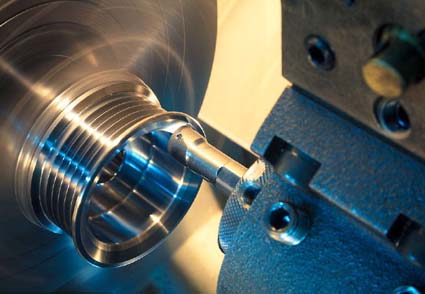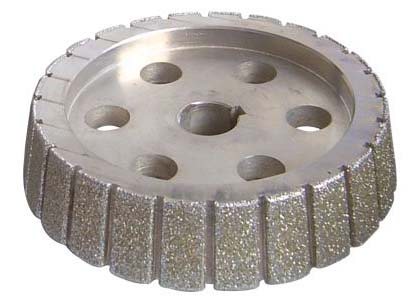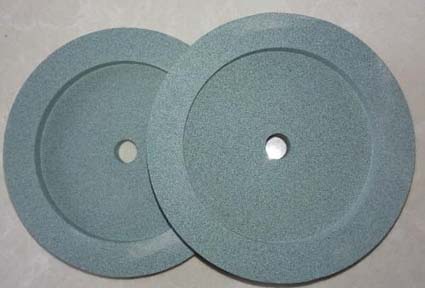Some Characteristics of Grinding Stainless Steel and Selection of Grinding Wheel
What are the characteristics of grinding stainless steel?

Stainless steel has high toughness and high heat strength, while the cutting edge of the grinding wheel has a large negative rake angle. During the grinding debris are not easily cut off, a large cutting resistance, extrusion, severe friction. The grinding force per unit area is very large, and the grinding temperature can reach 1000 ° C ~ 1500 ° C. At the same time, under the action of high temperature and high pressure, the grinding debris tends to adhere to the grinding wheel, filling the gap of the abrasive particles, so that the abrasive grains lose the cutting effect. Different types of stainless steel, the situation of the grinding wheel blockage is not the same, such as grinding resistant to concentrated nitric acid stainless steel and heat-resistant stainless steel, adhesion and clogging phenomenon is more serious than 1Cr18NiTi, while martensitic stainless steel such as 1Cr13, 2Cr13 is lighter.
The thermal conductivity of stainless steel is small, the high temperature during grinding is difficult to be exported, and the surface of the workpiece is prone to burns and annealing. The depth of the annealed layer sometimes ranges from 0.01 to 0.02 mm. Severe extrusion deformation during the grinding process results in work hardening of the grinding surface. In particular, when grinding austenitic stainless steel, since the austenite structure is not stable enough, martensite structure is easily generated after grinding, and the surface hardening is severe.
Stainless steel has a large coefficient of linear expansion and is easily deformed by the action of grinding heat, and its size is difficult to control. This is especially true for thin-walled and slender parts.
Most types of stainless steel cannot be magnetized during surface grinding. The workpiece can only be clamped by mechanical clamping or special fixtures, and the workpiece is clamped on the side of the workpiece to cause deformation and shape or dimensional error, and the thin plate workpiece is more prominent. At the same time, it will also cause chattering during the grinding process and scaly ripples.

 How to choose a grinding wheel when grinding stainless steel?
How to choose a grinding wheel when grinding stainless steel?
Abrasive:
White corundum has good cutting performance and self-sharpness, suitable for grinding martensite and martensite + ferritic stainless steel;
Single crystal corundum abrasive is suitable for grinding austenite and austenite + ferritic stainless steel;
Microcrystalline corundum abrasives are composed of many tiny crystals with high strength, toughness and self-sharpness. Its self-sharpening feature is that it breaks along the gap of the microcrystal, thereby obtaining the micro-blade and micro-blade contours, which can reduce the phenomenon of burns and hair pulling. It can reduce the surface roughness of grinding and is suitable for grinding various stainless steels;
The cubic boron nitride abrasive has high hardness, good thermal stability, high chemical inertness, and does not oxidize at 1300 ° C to 1500 ° C. The tip of the abrasive grain is not easily blunt, and the grinding heat generated is small, which is suitable for grinding various stainless steels. In order to reduce the sticking phenomenon, it is also possible to use a grinding wheel in which silicon carbide and synthetic diamond are used as abrasives.
Granularity:
When grinding stainless steel, it is generally preferred to use a medium-sized grinding wheel of No. 36, No. 46, No. 60.
For coarse grinding, the No. 36 and No. 46 particle sizes are used, and the No. 60 particle size is used for fine grinding. For both coarse and fine grinding, particle size 46 or 60 is used.
Binding agent:
Grinding stainless steel requires a high strength of the grinding wheel to withstand large impact loads. The ceramic bond is heat and corrosion resistant. The grinding wheel made of it can maintain the cutting performance well, is not afraid of moisture, and has porosity, and is suitable for making a bonding agent for grinding stainless steel grinding wheel. When grinding the inner hole of a material such as concentrated nitric acid stainless steel, a resin bond may be used to manufacture the grinding wheel.
Hardness:
A lower hardness grinding wheel should be used to improve self-sharpness. Grinding wheels with G-N hardness are generally used, among which K-L is the most common, and the inner-grinding wheel using microcrystalline corundum as the abrasive is suitable for J hardness.
Organization:
In order to avoid blockage of the grinding wheel during grinding, the grinding wheel structure should be loose. Generally, it is more suitable to use No. 5 to No. 8.

Stainless steel has high toughness and high heat strength, while the cutting edge of the grinding wheel has a large negative rake angle. During the grinding debris are not easily cut off, a large cutting resistance, extrusion, severe friction. The grinding force per unit area is very large, and the grinding temperature can reach 1000 ° C ~ 1500 ° C. At the same time, under the action of high temperature and high pressure, the grinding debris tends to adhere to the grinding wheel, filling the gap of the abrasive particles, so that the abrasive grains lose the cutting effect. Different types of stainless steel, the situation of the grinding wheel blockage is not the same, such as grinding resistant to concentrated nitric acid stainless steel and heat-resistant stainless steel, adhesion and clogging phenomenon is more serious than 1Cr18NiTi, while martensitic stainless steel such as 1Cr13, 2Cr13 is lighter.
The thermal conductivity of stainless steel is small, the high temperature during grinding is difficult to be exported, and the surface of the workpiece is prone to burns and annealing. The depth of the annealed layer sometimes ranges from 0.01 to 0.02 mm. Severe extrusion deformation during the grinding process results in work hardening of the grinding surface. In particular, when grinding austenitic stainless steel, since the austenite structure is not stable enough, martensite structure is easily generated after grinding, and the surface hardening is severe.
Stainless steel has a large coefficient of linear expansion and is easily deformed by the action of grinding heat, and its size is difficult to control. This is especially true for thin-walled and slender parts.
Most types of stainless steel cannot be magnetized during surface grinding. The workpiece can only be clamped by mechanical clamping or special fixtures, and the workpiece is clamped on the side of the workpiece to cause deformation and shape or dimensional error, and the thin plate workpiece is more prominent. At the same time, it will also cause chattering during the grinding process and scaly ripples.


Abrasive:
White corundum has good cutting performance and self-sharpness, suitable for grinding martensite and martensite + ferritic stainless steel;
Single crystal corundum abrasive is suitable for grinding austenite and austenite + ferritic stainless steel;
Microcrystalline corundum abrasives are composed of many tiny crystals with high strength, toughness and self-sharpness. Its self-sharpening feature is that it breaks along the gap of the microcrystal, thereby obtaining the micro-blade and micro-blade contours, which can reduce the phenomenon of burns and hair pulling. It can reduce the surface roughness of grinding and is suitable for grinding various stainless steels;
The cubic boron nitride abrasive has high hardness, good thermal stability, high chemical inertness, and does not oxidize at 1300 ° C to 1500 ° C. The tip of the abrasive grain is not easily blunt, and the grinding heat generated is small, which is suitable for grinding various stainless steels. In order to reduce the sticking phenomenon, it is also possible to use a grinding wheel in which silicon carbide and synthetic diamond are used as abrasives.
Granularity:
When grinding stainless steel, it is generally preferred to use a medium-sized grinding wheel of No. 36, No. 46, No. 60.
For coarse grinding, the No. 36 and No. 46 particle sizes are used, and the No. 60 particle size is used for fine grinding. For both coarse and fine grinding, particle size 46 or 60 is used.
Binding agent:
Grinding stainless steel requires a high strength of the grinding wheel to withstand large impact loads. The ceramic bond is heat and corrosion resistant. The grinding wheel made of it can maintain the cutting performance well, is not afraid of moisture, and has porosity, and is suitable for making a bonding agent for grinding stainless steel grinding wheel. When grinding the inner hole of a material such as concentrated nitric acid stainless steel, a resin bond may be used to manufacture the grinding wheel.
Hardness:
A lower hardness grinding wheel should be used to improve self-sharpness. Grinding wheels with G-N hardness are generally used, among which K-L is the most common, and the inner-grinding wheel using microcrystalline corundum as the abrasive is suitable for J hardness.
Organization:
In order to avoid blockage of the grinding wheel during grinding, the grinding wheel structure should be loose. Generally, it is more suitable to use No. 5 to No. 8.
PREVIOUS:NONE
NEXT:NONE
NEXT:NONE





